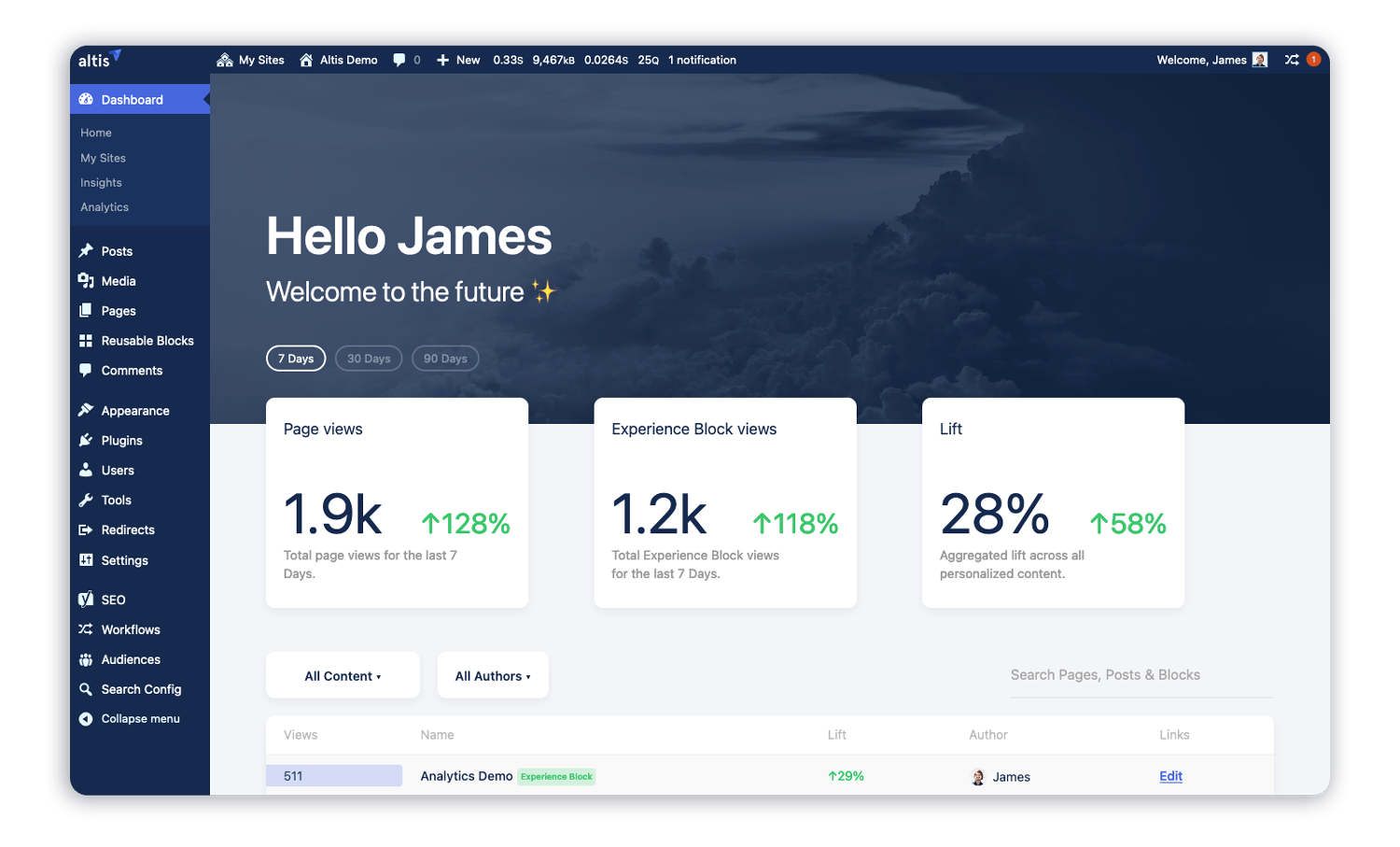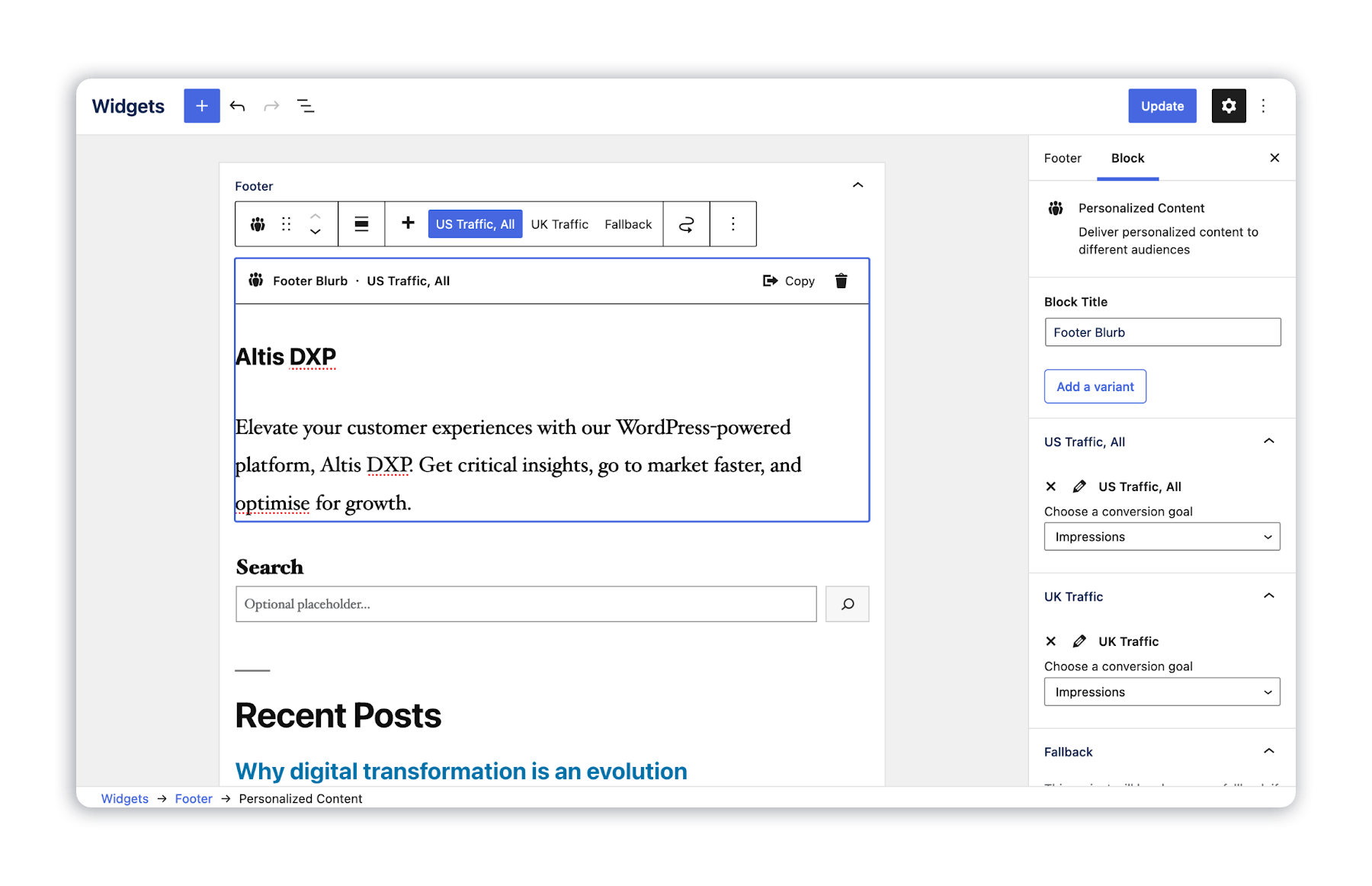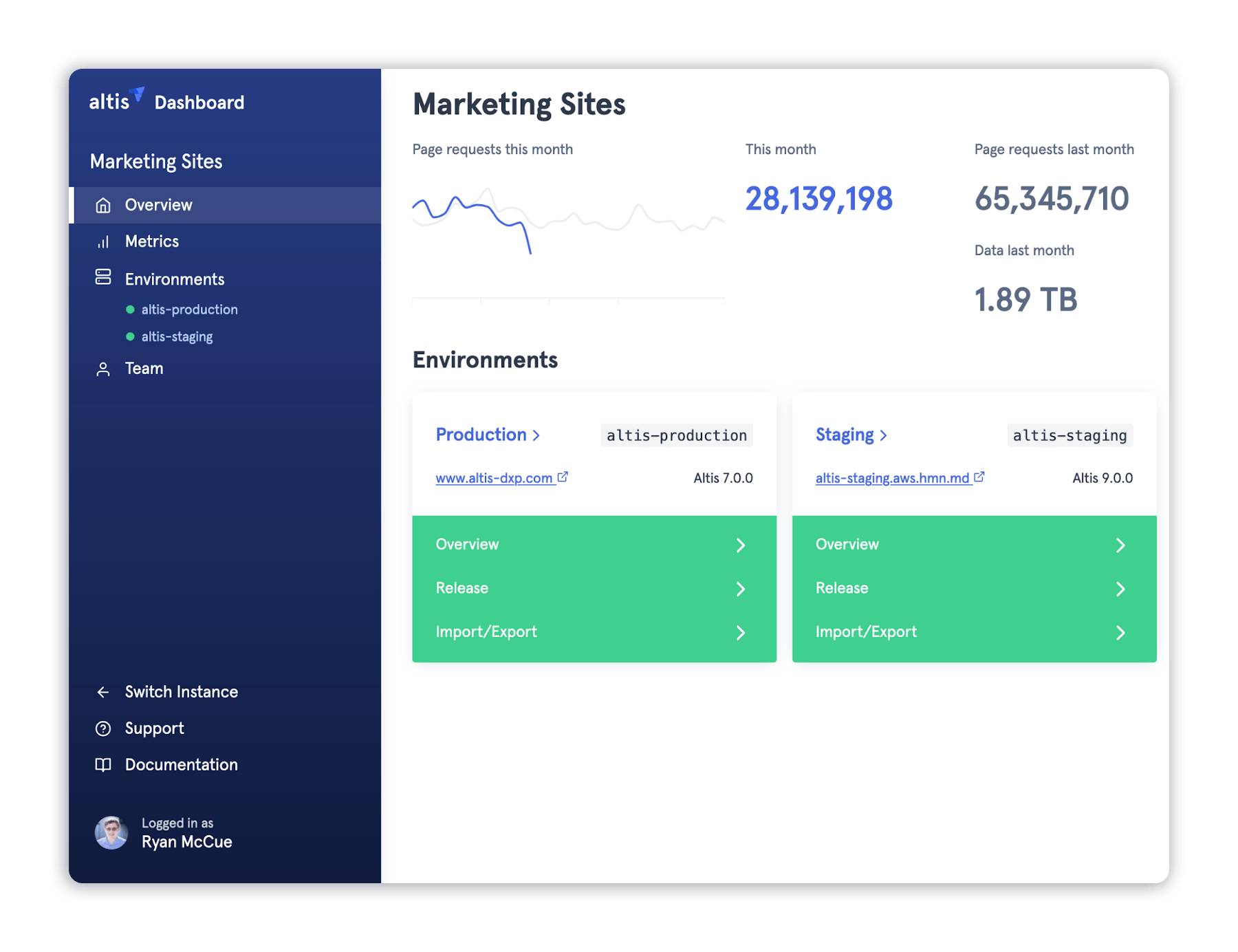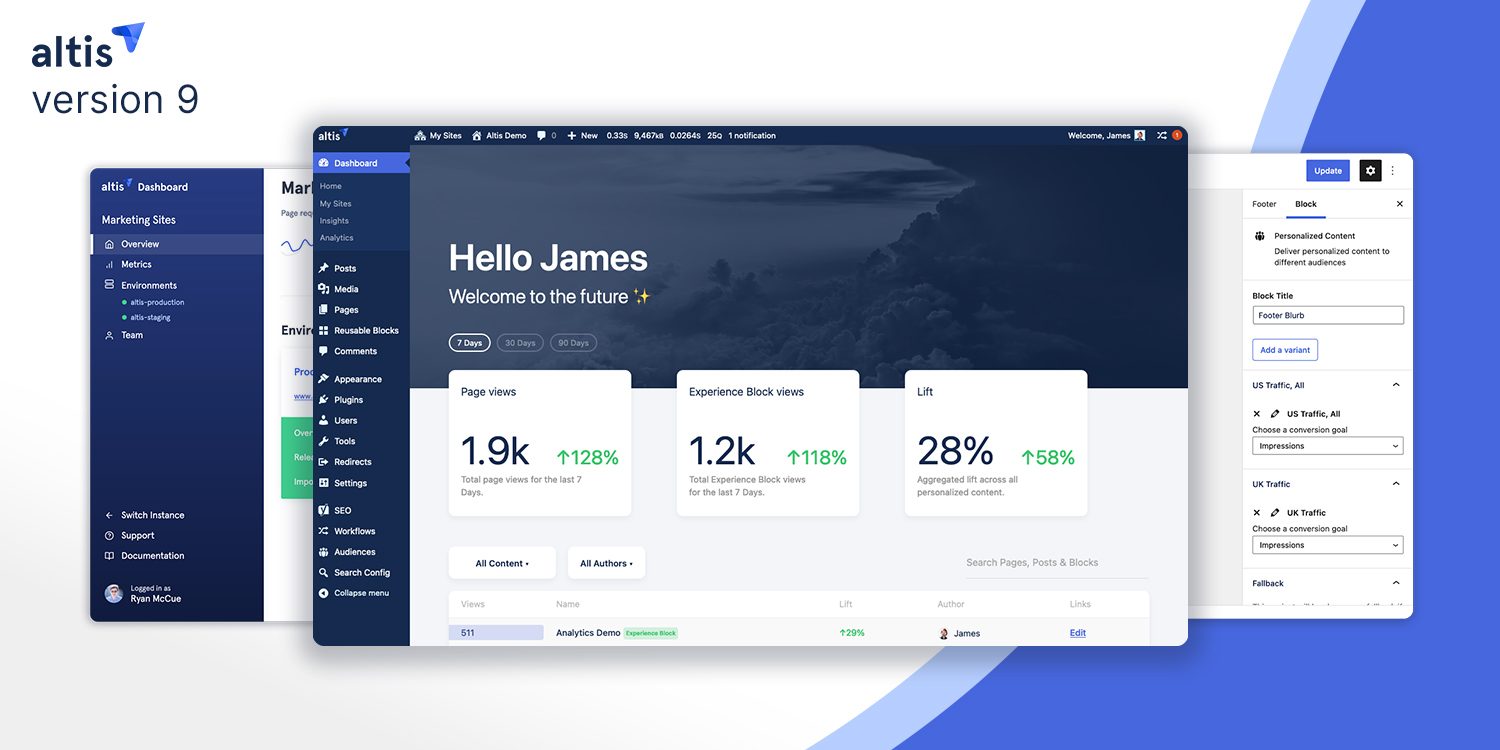Altis v9 is now available, bringing enhancements to the user experience for both developers and marketers with important incremental updates to the digital experience platform. This release focuses on foundational technologies in Altis which prime it for even bigger future updates.
With version 9, Altis is also launching the Insights Dashboard beta, which is now available on an opt-in basis to level up the marketing experience.
Already an Altis user? Follow our guide to update to the current version.
Introducing the Insights Dashboard
Getting a quick overview of your top-level metrics has never been easier with the new Insights Dashboard. This feature replaces the legacy widget-based WordPress dashboard, providing rich data and visual insights into how your site’s content is performing at a glance.

The Insights Dashboard is launching as an opt-in beta, allowing the Altis team to rapidly incorporate customer feedback and improvements as we continue to develop these features.
Personalise your sidebar with block-based widgets
The new Sidebar Editor lets you use blocks to build sidebars, expanding the flexibility of the block editor beyond the regular content editor for the first time. Fluently design and edit a page sidebar using dozens of available block types to show complementary information, products, events, content suggestions, and more.
The Sidebar Editor supports most blocks, including standard rich text formatting and embeds. Plus, Experience Blocks are also fully supported, allowing you to apply content personalisation to the sidebar to provide an even more finely-honed digital experience for your audiences.

Just like using Experience Blocks in the content editor, you can target sidebar blocks to users based on any audience attributes, including geolocation, referrers and inbound tracking, and much more.
Developer Experience
The new Altis Cloud Dashboard
The Altis Cloud Dashboard has also received some major updates throughout this quarter. These updates are already live for all customers.
The Dashboard has received a major design refresh, simplifying and clarifying the UI for users and developers. Partners with multiple clients will now see environments grouped by instance, along with per-instance team management.

CLI access in the Cloud Dashboard is now available to all developers, allowing you to easily perform maintenance, debugging operations, and complex import tasks directly through the Dashboard.
Speaking of imports, you can now easily import data directly between your environments within the Dashboard, without needing any additional steps from Altis.
Official support for Apple Silicon (M1) and ARM devices
With version 9, Altis now officially supports ARM-based devices for local development. This increases the options available to developers on modern Apple devices by taking full advantage of the power available with Apple Silicon.
This brings performance benefits over the previous generation of Intel-based devices, with a 3.5x speed improvement, enhancing developers’ workflows.
Note: ARM devices are only supported with the Altis Local Server environment.
Major improvements to Elasticsearch with version 7.10
Developers can now take advantage of the power of Elasticsearch 7.10, with improved and new query types, aggregations, and language support. Plus, reindexing is no longer required after updating synonyms, stopwords or the Japanese user dictionary, removing the need to run long and costly processes on behalf of users.
Developers can opt in to Elasticsearch 7.10 right away across cloud and local environments. We recommend developers begin testing these versions when upgrading to v9 in order to take advantage of these new versions.
WordPress 5.8 “Tatum”
Altis v9 also includes WordPress 5.8 “Tatum”, which brings a host of new features and capabilities to the development platform.
The continuous improvements to support in WordPress for block-based themes continue, with initial support for Full Site Editing included in 5.8. A tonne of other improvements are included, such as:
- The new theme.json file provides a way for themes to define global settings that blocks can use via the useSetting() hook, and can also be used to define the default settings for individual blocks such as fonts, colors, sizes, any attribute that can be set for a block!
- Widgets are now managed via a block based editor
- The Template Editor lets you create reusable page layouts using all the blocks available to your site, along with higher level blocks for site logo, nav menus and other structural elements. The templates can be saved and reused on your pages and posts and work in the same way as page templates defined in the theme.
- Support for uploading WebP images has been added. JPEG and PNG images in Altis are already converted to WebP by default for browsers which support this, and now WebP images can be uploaded directly.
- REST API support for widgets enables the new block based widget editor and provides a robust way to use widgets with headless applications.
The WordPress 5.8 Field Guide is a great place to learn about what’s new.
Upgrading
As with every Altis release, all the latest changes are fully documented in the Altis Developer Documentation. Our upgrading guide covers all the steps needed to upgrade to version 9.
Looking forward to v10
Our target release date for v10 is 2022W5 (week beginning January 24, 2022), with our beta available from 2022W4 (week beginning January 17, 2022).


